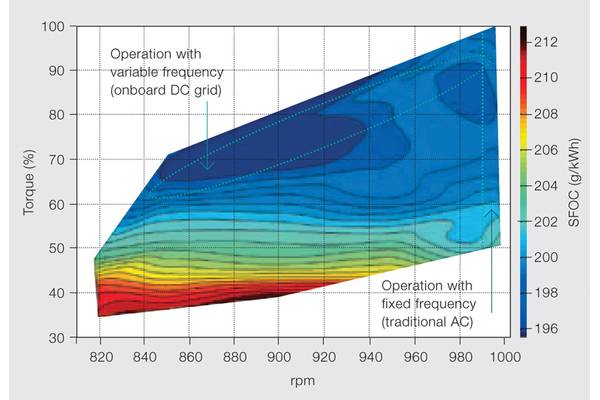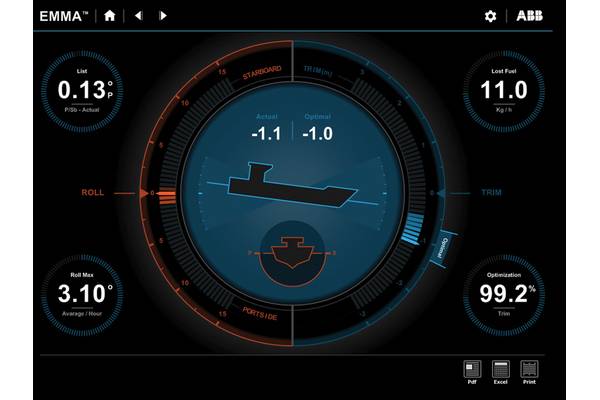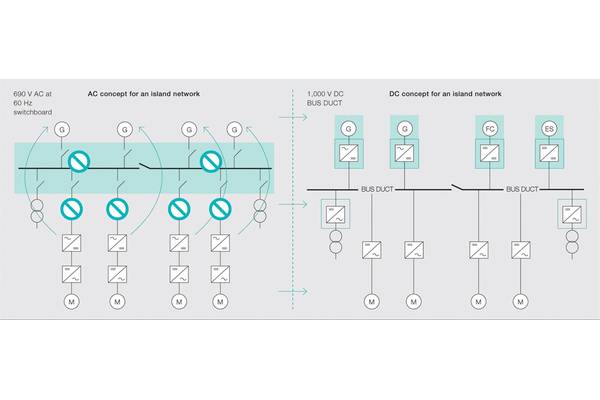


In the marine industry, we have key interests in direct conflict with each other. For example, the shipowner wants a solid return on investment for the lifetime of the asset but the shipyard wants to build at lowest cost. Meanwhile, auditors want to be impartial but need to maintain customer satisfaction. Hence, it is sometimes untimely and slow to synchronize a unison change in direction for industry. Once in a while, it does happen. When it does, it is interesting to note who leads it – and how.
HVSC – Cold Iron
More than 10 years ago the first maritime high voltage shore connection (cold iron) was coming on line. Although promoted by local activists, the fervor to put an action plan in place came from shipowners and their engineers. Before any local mandates or regulations were in place, the plan to change the environmental impact came from the owner. While international standards are finally coming in play and legislations are taking effect, the change came over 10 years ago by innovation from the owners and close collaboration with their key suppliers.
Energy Monitoring and Management (EMMA)
Meanwhile, across entrepreneurial minds and start-up offices plans were coming together on how to improve on reduction of harmful emissions. The cost of fuel was making energy management systems more attractive but emissions abatement is the legislative marketing word of choice. Innovation in most cases came from small workgroups that understood the processes and additionally had the stamina to advocate change. New businesses spring out of opportunity in the market. Ironically, mature industries that already had to innovate to maintain profitability know what methods have the best payback. Cross pollination across these mature and young industries happens primarily in large multinational organizations where individual contributors bring their wisdom to new markets. This was the case with ABB’s Energy Monitoring and Management (EMMA) that brought best practices from many industries to the marine market. Some of the entrepreneurial innovators in the marine industry have proven new techniques such as ‘dynamic trim optimization’ but sustainable innovation development of tools is seldom repetitively from the same person. ABB’s solution offers a renewable channel of best practices and innovation as is the case with the optimization tools being delivered through EMMA.
OnBoard DC Grid
In designing a radical new system, ABB engineers looked at the entire power delivery chain of energy conversions on marine vessels and identified a case for using DC distribution rather than the traditional AC system. Two longstanding and crucial principles have been carried over from the traditional AC distribution system to form the framework of the onboard DC grid philosophy: Personnel and equipment must be protected in case of failures and sound selectivity shall be ensured in such a way that safe operation is maintained after any single failure.
The new system merges the various DC links around the vessel and distributes power through a single 1,000 V DC circuit, thereby eliminating the need for main AC switchboards, distributed rectifiers and converter transformers (Figure 3). All generated electric power is fed either directly or via a rectifier into a common DC bus that distributes the electrical energy to the onboard consumers. Each main consumer is then fed by a separate inverter unit. When an AC distribution network is still needed, for example with a 230 V hotel load, it is fed using island converters, developed by ABB to feed clean power to these more sensitive circuits. Additional converters for energy storage in the form of batteries or super capacitors for leveling out power variations can be added to the DC grid.
The system has been remodeled in such a way that most of the products used in today’s electric ships such as AC generators, inverter modules, and AC motors can still be used. The onboard DC grid can be configured in several different ways. With a centralized approach all converter modules are located in one or multiple lineups within the same space that the main AC switchboards used to occupy. With a distributed approach, the various converters can be placed where it suits the vessel operation or design best. The AC generators can have either integrated or stand-alone rectifiers installed in cabinets. As a result, the volume of components that, by regulation, must be installed in the main switchboard room is drastically reduced. This affords the vessel designer a new level of freedom in designing the electrical power system to increase vessel functionality and value.
Best Practices Meet New Thinking
The DC grid concept utilizes AC generators and motors, but allows for increased efficiency because the system is no longer locked to a specific frequency (usually 60 Hz on ships), even though any 60 Hz power source may still be used. The new freedom of controlling each power consumer independently opens up numerous ways of optimizing fuel consumption. When operating marine combustion engines at constant speed, the fuel consumption is lowest at a very small operating window, typically around 85 percent of rated load. With the introduction of variable-speed operation of the engine, this window of optimal efficiency can be extended as far down as 50 percent, depending on the engine (Figure 4). If the engine is operated at loads below this, the engine efficiency remains significantly higher than that of the traditional fixed speed equivalent. The end result is that a typical offshore support vessel can achieve fuel savings of up to 20 percent.
By eliminating bulky converter transformers and main switchboards previously needed with the traditional AC system, the onboard DC grid also reduces the footprint of the electrical equipment used. This creates more space and provides greater flexibility in the positioning of system components in the vessel. In addition, the system enables simpler integration of supplementary DC energy sources such as solar panels, fuel cells or batteries into the ship’s DC electric systems, creating scope for further fuel savings.
In Use Today: End User Dividends
ABB will equip a newbuild platform supply vessel with a full onboard DC grid system, including all power, propulsion and automation systems. The 93 meter multipurpose vessel, designed by the Norwegian company Marin Teknikk, is due for delivery in the first quarter of 2013. The vessel has five variable-speed diesel generators, four rated at 2,240 kW and one at 920 kW, two 2,200 kW main propulsion units and three additional thrusters for DP operation.
The reduced weight and footprint of the installed electrical equipment will vary depending on the ship type and application, but in one case the use of the onboard DC grid system on a platform supply vessel (PSV) reduced the weight of the electric system components by 25 percent from 115 to 86 tons. And, this is just one way in which environmental change is coming to the waterfront – this time, for good.
The Author
Eric Schreiber is Sr. Manager, Business Development at ABB Inc. Prior to that, he was Manager, Engineering Services at Royal Caribbean Cruises, and additionally has served as a surveyor at Lloyds Register.
(As published in the 3Q edition of Maritime Professional - www.marinelink.com)



